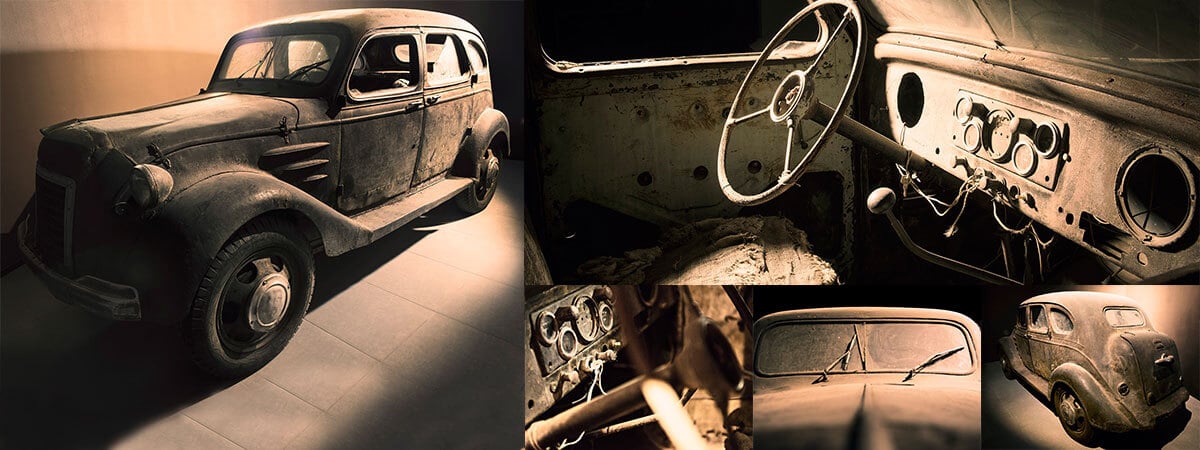Select your preferred store for a more customised experience.
AA - A rare find

The rarest car in the world, an origional Toyoda model AA, has gone from Siberian farm life to prode of place in the Louwman Museum, Neatherlands.
The car, in its original condition, is the only known surviving example of a pre-World War II Toyoda Model AA.
It’s a large, rust-marked car standing alone in low light. An unpolished gem that’s a treasured piece of Japanese history, it was Toyota’s very first production passenger car. The AA was born in 1936 at the automobile division of Toyoda Automatic Loom Works, bearing the name of its founder Kiichiro Toyoda. Before cars, Toyoda’s family had built a successful weaving business in Japan, but for the entrepreneurial Kiichiro, inspired by visits to America, its automobiles and its factories, a future making cars beckoned.
After an early prototype model in 1935, Kiichiro’s dream finally became a reality when the Model AA was released to the general public a year later. Inspired by the design of the leading American cars of the time, the AA bore many similarities to the Chevrolet Airflow.
Like the body, the engine was modelled after the proven units found in the USA, so a 3.3 litre, six cylinder unit was developed to power the AA.
The new division needed a new identity, so in 1937 the company ran a competition to find a new name. Thousands of entries later the Toyota Motor Co. was established, its name chosen primarily because it was composed of eight ‘lucky’ strokes when written in Japanese.
In 1942 – after manufacturing 1,404 cars – the Model AA ended its production run. Now, seven decades later, the significance and rarity of this first car can only be fully appreciated inside the Louwman Museum.
The fact that the Dutch museum has in its possession one of the most important cars in Toyota’s history comes down to a little bit of good fortune and a lot of determination.
In 2008, Ronald Kooyman, Louwman Museum’s Managing Director, took a call from a contact saying they knew of someone selling an AA. Ronald, made a call to Russia where a 25 year old student had apparently noticed the car for sale in a local newspaper.
Even though the car was mistakenly advertised as an Airflow (a mistake also replicated in the car’s paperwork), the student was convinced of the car’s true identity – and, after an exchange of more emails and photos and some intricate detective work, it was indeed confirmed as an AA.
Incredibly, the car was being sold by the grandson of a farmer who had used the AA as a workhorse on his land in Siberia since World War II. Time was of the essence: a flight to Moscow and a connection to the remote Siberian city of Vladivostok resulted in the Louwman Museum finding and acquiring an original Model AA, the rarest in the world.
After seven months of form filling emails and lengthy phone calls, the Russian Ministry of Culture gave the museum permission to take the car out of the country to assume pride of place in its new home in the Netherlands.
What hits you first is the smell, a combination of musty upholstery and oxidised metal. Naturally, a car with this kind of history hasn’t survived in perfect condition. Eagle eyed AA experts will notice the newer radiator grille, headlamps, door handles and wheels.
The elegant wheel arches wrap around the tyres and flow into wide doorsills, finishing with a subtle lift at the rear where they meet the curvaceous tail. The imposing bonnet dominates the view, but this is neatly offset by three delicate veins that run down each wing.
A key design feature of an original AA is its split windscreen, and the narrow sliver of glass is still there offering the driver a commanding view down the long bonnet. During its life the discreet wipers have moved from their original top down position to a more modern bonnet level.
Not surprisingly, the interior is still in the condition it was when found and can be best described as ‘agricultural’, but you soon look past the ripped seats and trims to see how it would have looked when new.
The large three spoke wooden steering wheel appears huge compared with a modern car’s and in this example now sits on the left, a switch from its original right hand drive position. Seeing the AA in the condition it was found – ignition key still in the barrel tied with a piece of string, cracked side windows and ripped seat covers – adds to its mystique.
Seeing an original AA complete with battle wounds and scars, knowing that when it was collected in Russia it still started and drove, just reinforces the dedication to quality that was at the forefront of Kiichiro Toyoda’s approach when he first started building the AA, and is still the heart of everything Toyota stands for today.
Source: Believe Magazine - Issue 12 2015